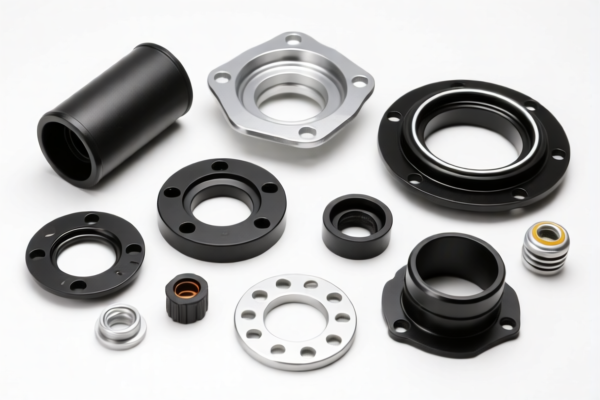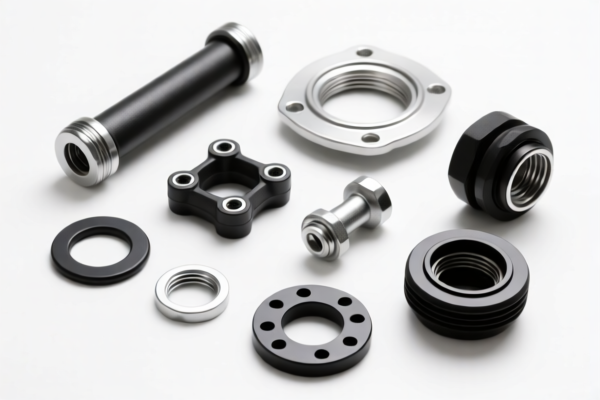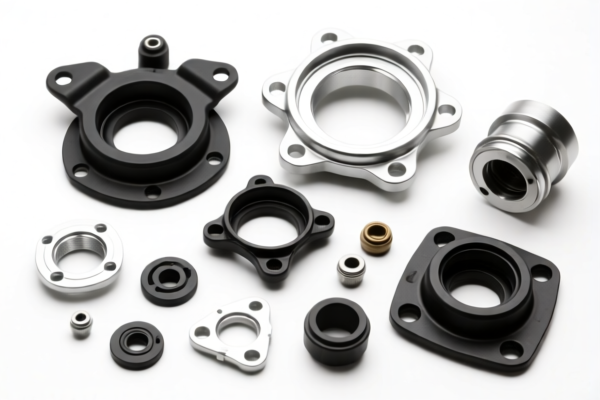| HS Code | Official Doc | Tariff Rate | Origin | Destination | Effective Date |
|---|---|---|---|---|---|
| 8533408040 | Doc | 55.0% | CN | US | 2025-05-12 |
| 8533408070 | Doc | 55.0% | CN | US | 2025-05-12 |
| 8518402000 | Doc | 30.0% | CN | US | 2025-05-12 |
| 9032896075 | Doc | 56.7% | CN | US | 2025-05-12 |
| 9032896040 | Doc | 56.7% | CN | US | 2025-05-12 |
| 9031499000 | Doc | 55.0% | CN | US | 2025-05-12 |
| 9031808085 | Doc | 30.0% | CN | US | 2025-05-12 |




Volume Controller
A volume controller is a device or function used to adjust the loudness of an audio signal. It is a fundamental component in a wide range of audio equipment, enabling users to regulate sound levels to suit their preferences and listening environment.
Material
Volume controllers utilize various materials depending on their construction type. Common materials include:
- Potentiometers: These analog controllers frequently employ carbon film, cermet, or wirewound resistive elements for variable resistance. Housings are typically made of plastic or metal.
- Digital Encoders: These use optical or magnetic sensors and are often encased in plastic or metal.
- Integrated Circuits (ICs): Digital volume controllers are implemented using semiconductor materials like silicon.
- Microcontrollers: Used in advanced digital controllers, these employ silicon-based integrated circuits.
- Mechanical Components: Older designs may use geared mechanisms with metal or plastic parts.
Purpose
The primary purpose of a volume controller is to provide user control over audio output levels. This allows for:
- Comfortable Listening: Preventing excessively loud sounds that could damage hearing.
- Optimal Sound Quality: Adjusting levels to avoid distortion or clipping.
- Signal Management: Balancing audio levels between different sources or components.
- User Preference: Catering to individual listening tastes.
Function
Volume controllers function by altering the amplitude of an audio signal. The method varies depending on the controller type:
- Analog Control (Potentiometers): A variable resistor divides the input signal, with the user adjusting the resistance to control the output voltage. Turning the knob changes the amount of signal passed through.
- Digital Control: Digital controllers utilize digital signal processing (DSP) to attenuate the signal. This is typically achieved by reducing the bit depth of the audio data or by multiplying the signal by a gain factor.
- Logarithmic Taper: Many volume controllers employ a logarithmic (log) taper. This provides a more natural-sounding adjustment, as human perception of loudness is logarithmic. Equal increments on the controller correspond to equal perceived changes in volume.
Usage Scenarios
Volume controllers are found in numerous applications:
- Home Audio Systems: Receivers, amplifiers, speakers, headphones.
- Professional Audio Equipment: Mixing consoles, studio monitors, microphones.
- Automotive Audio: Car stereos, infotainment systems.
- Personal Electronic Devices: Smartphones, tablets, laptops, MP3 players.
- Public Address Systems: Sound reinforcement systems in venues.
- Musical Instruments: Electric guitars, keyboards, synthesizers.
Common Types
- Rotary Potentiometers: The most common type, featuring a rotating knob to adjust volume.
- Fader Controls (Linear Taper): Commonly found on mixing consoles, these use a sliding control for precise volume adjustments.
- Digital Volume Controls (DVCs): Implemented in software or using dedicated ICs, often controlled via buttons, encoders, or touchscreens.
- Motorized Faders/Encoders: Used in automated audio systems, allowing for remote control and preset recall.
- Touchscreen Volume Controls: Integrated into the display of devices, providing a virtual volume adjustment interface.
- Stepped Attenuators: Provide discrete volume steps instead of continuous adjustment, often used in high-end audio equipment for precise matching of channels.
- Optical Volume Controls: Use light-dependent resistors to control volume, offering isolation and low noise.
Based on the provided information, a volume controller can be classified under several HS codes, depending on its specific function and application. Here's a breakdown of potential classifications:
- 8533408040: Electrical resistors (including rheostats and potentiometers), other than heating resistors; parts thereof: Other variable resistors, including rheostats and potentiometers: Other Rheostat and resistor type motor starters and controllers. This code applies if the volume controller functions as a rheostat or potentiometer used in motor control systems. The total tax rate is 55.0%, comprising a 0.0% base tariff, a 25.0% additional tariff, and a 30% additional tariff effective after April 2, 2025.
- 8533408070: Electrical resistors (including rheostats and potentiometers), other than heating resistors; parts thereof: Other variable resistors, including rheostats and potentiometers: Other Other. This code is applicable if the volume controller is a variable resistor (rheostat or potentiometer) not specifically categorized as a motor starter or controller. The total tax rate is 55.0%, with a 0.0% base tariff, a 25.0% additional tariff, and a 30% additional tariff effective after April 2, 2025.
- 8518402000: Microphones and stands therefor; loudspeakers, whether or not mounted in their enclosures; headphones and earphones, whether or not combined with a microphone, and sets consisting of a microphone and one or more loudspeakers; audio-frequency electric amplifiers; electric sound amplifier sets; parts thereof: Audio-frequency electric amplifiers: Other. If the volume controller is integrated as part of an audio-frequency electric amplifier, this code may be applicable. The total tax rate is 30.0%, consisting of a 0.0% base tariff and a 30% additional tariff effective after April 2, 2025.
According to the provided reference material, the HS code options related to 'volume controller' are limited, with only the following 3 found.
It is important to note that the final HS code classification depends on the specific features and intended use of the volume controller.
Customer Reviews
No reviews yet.